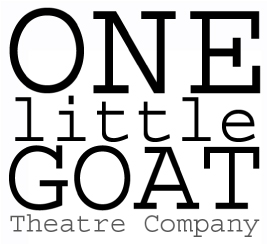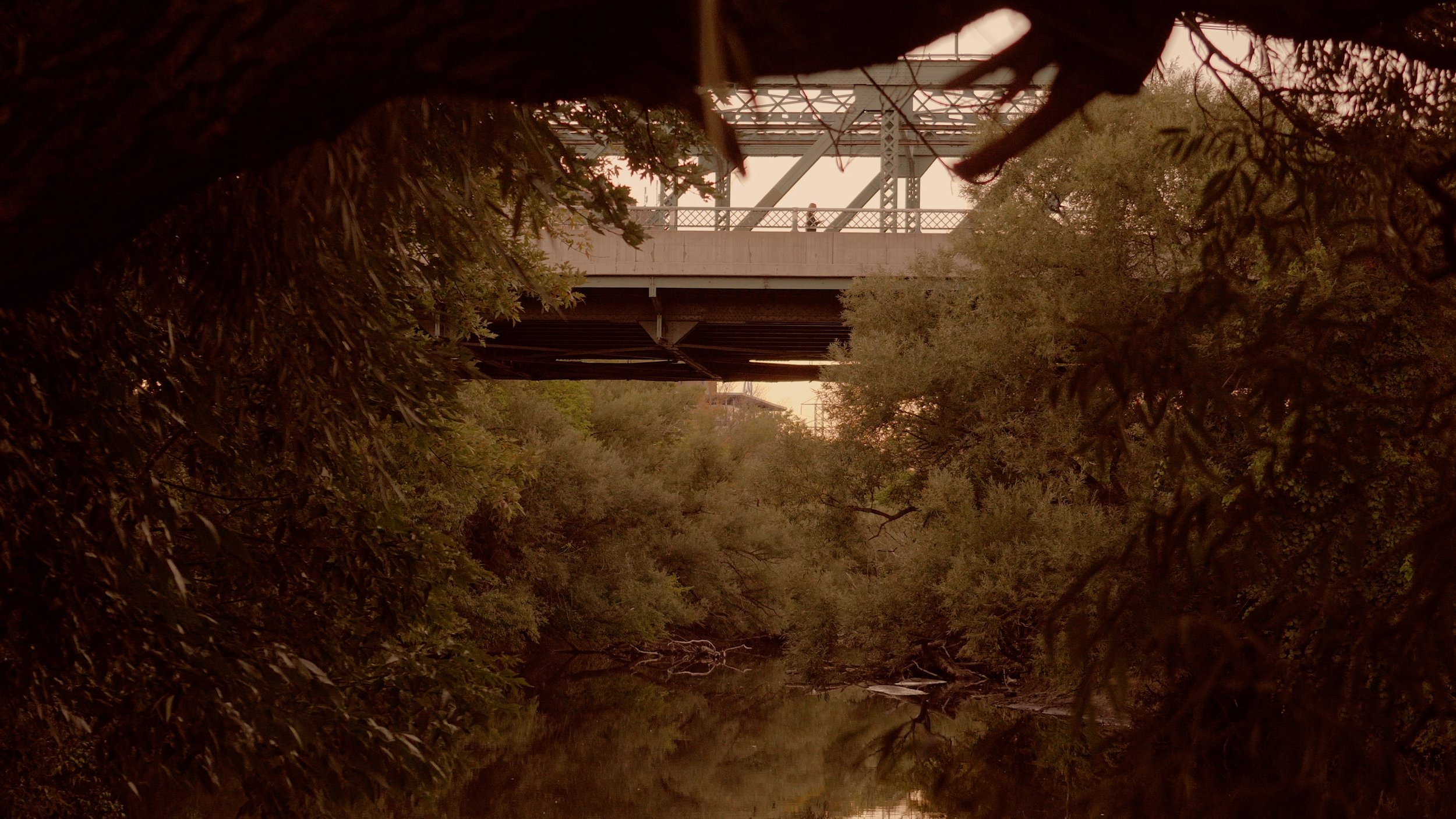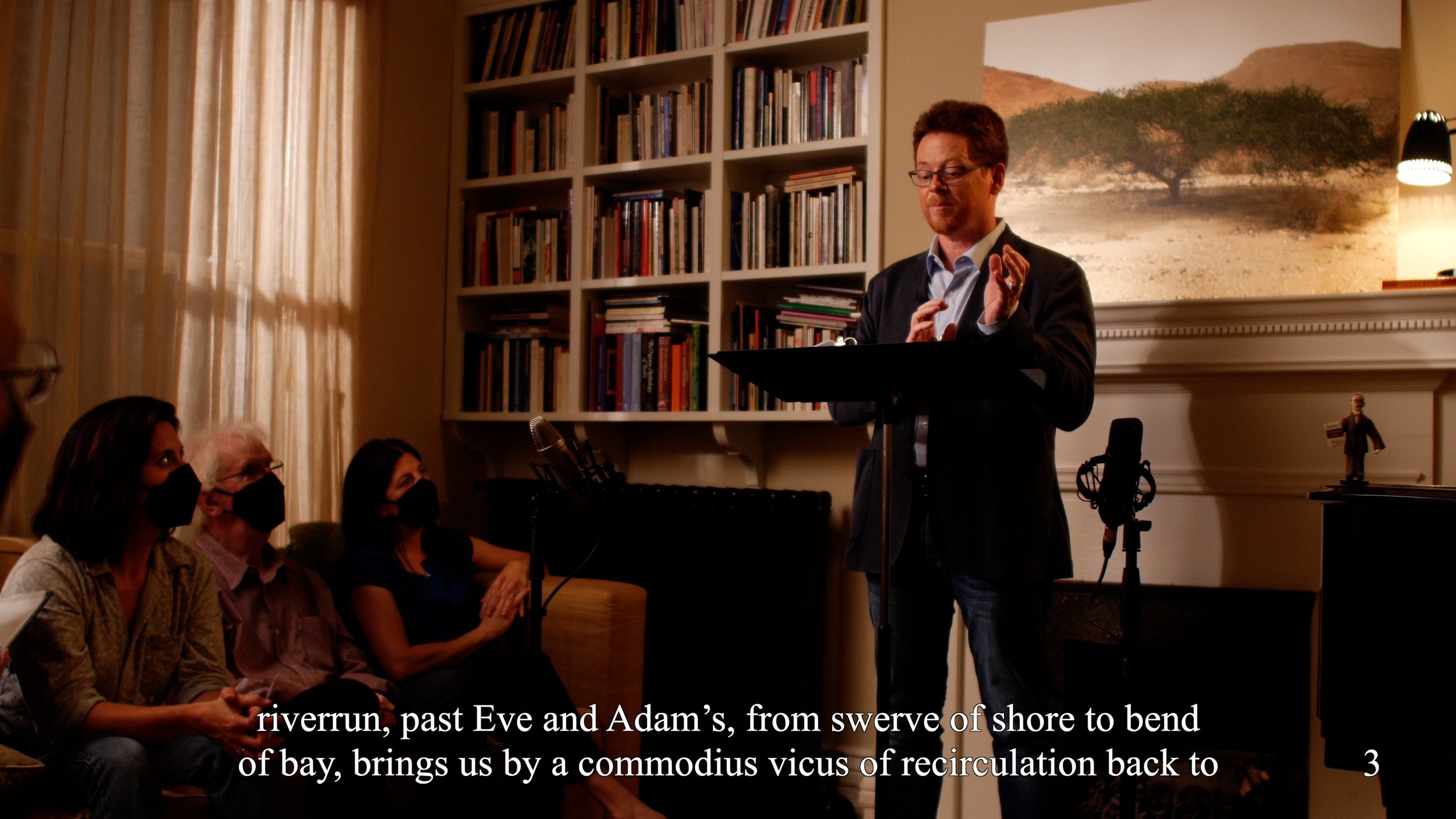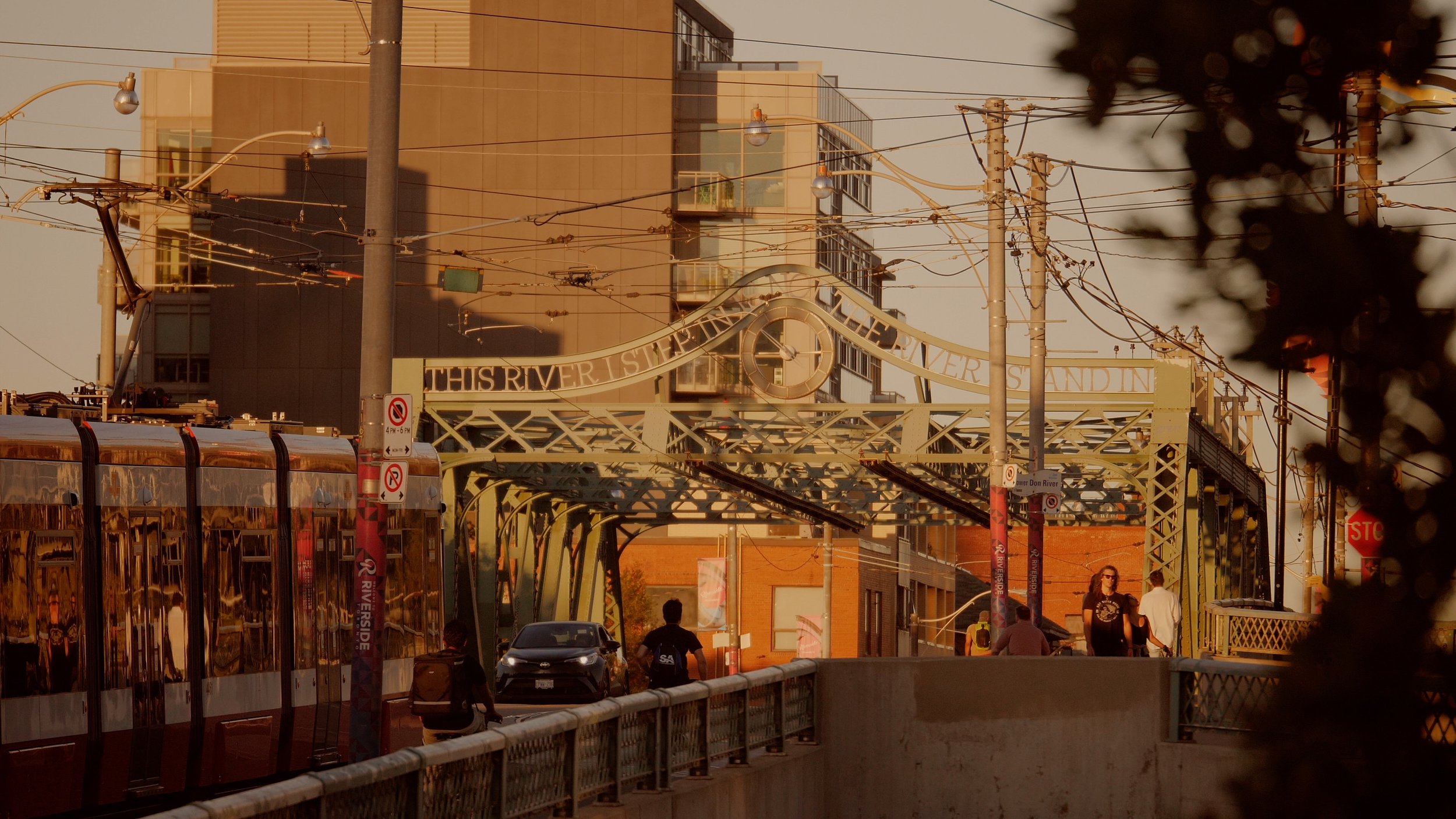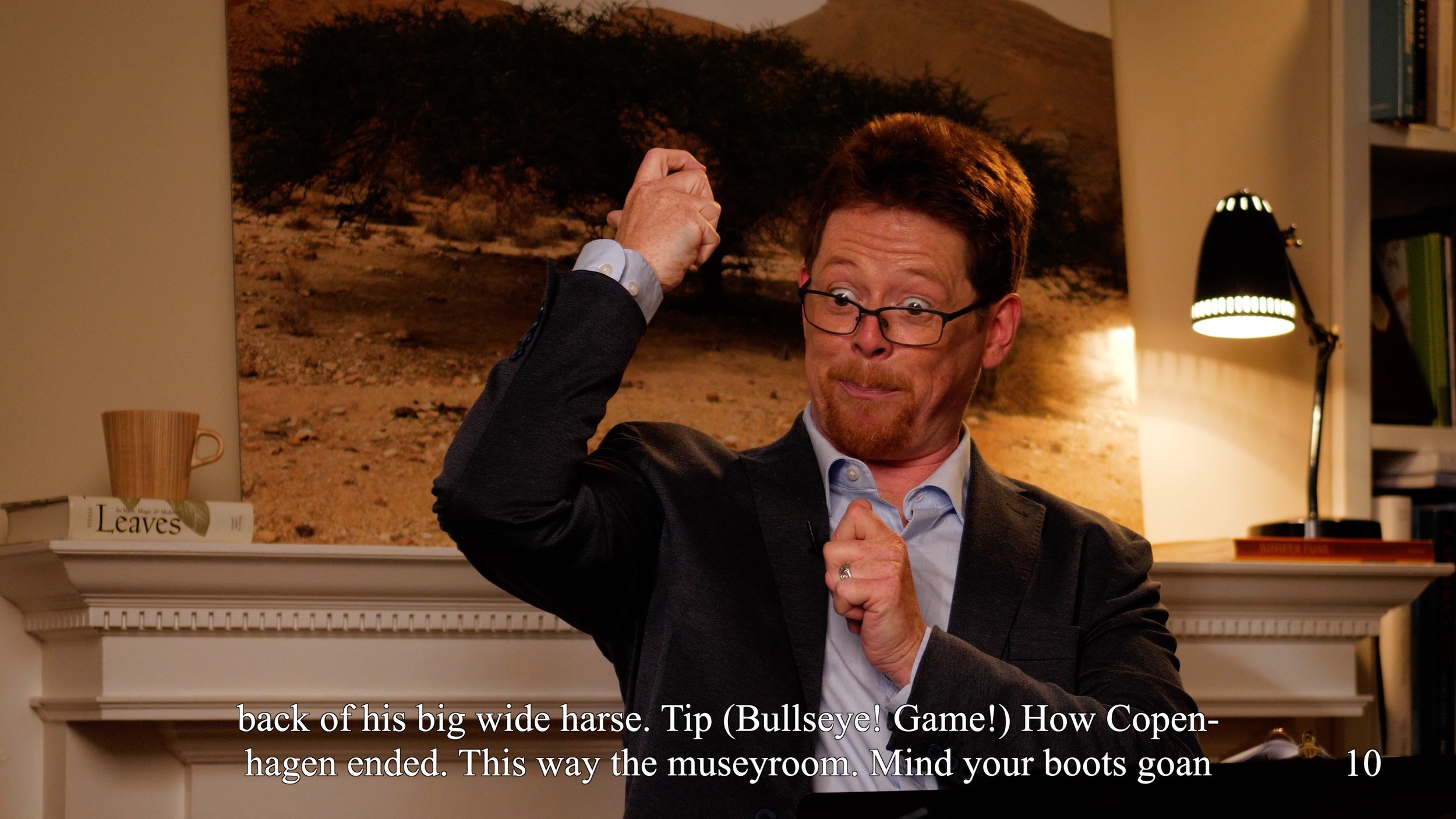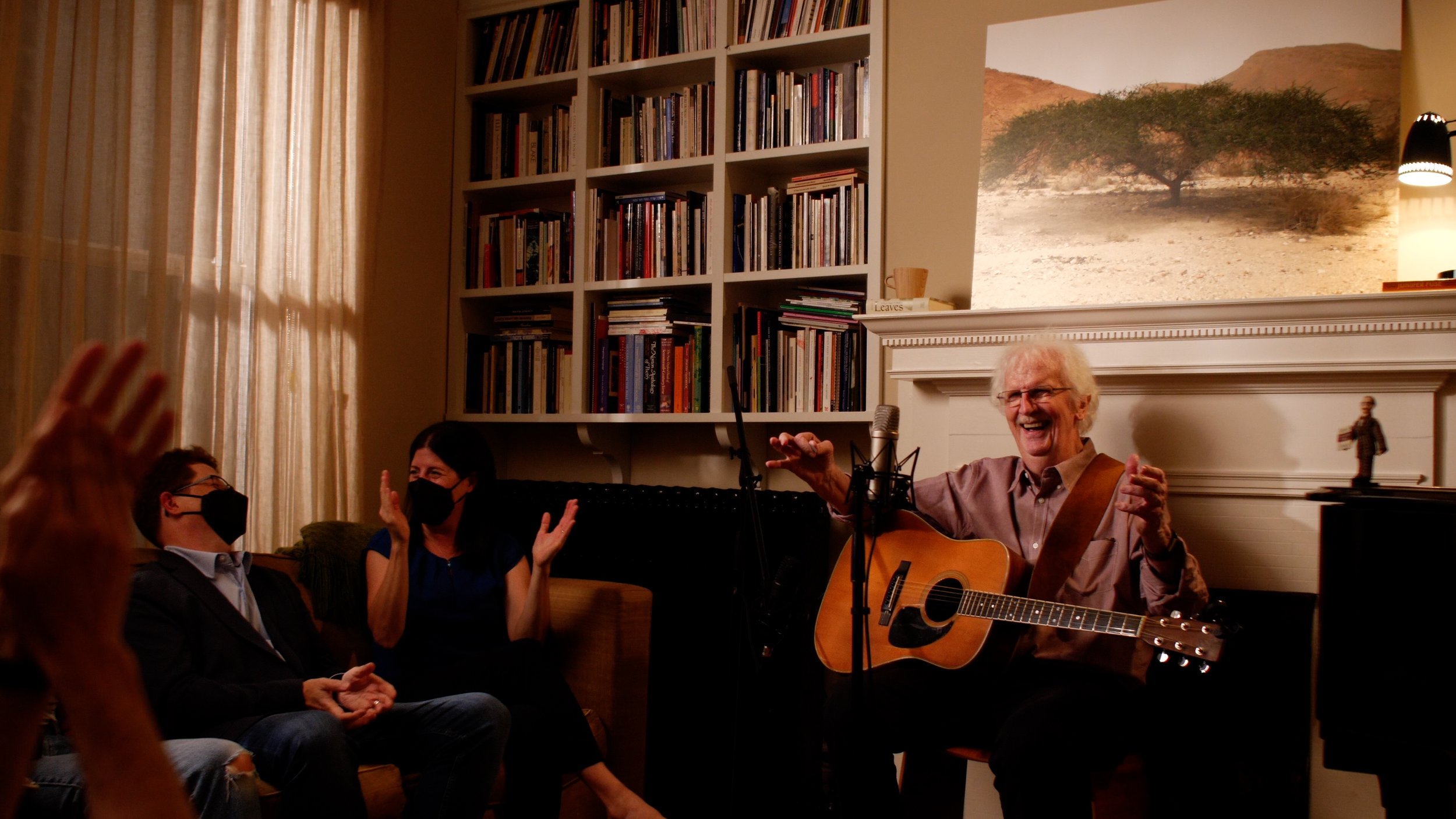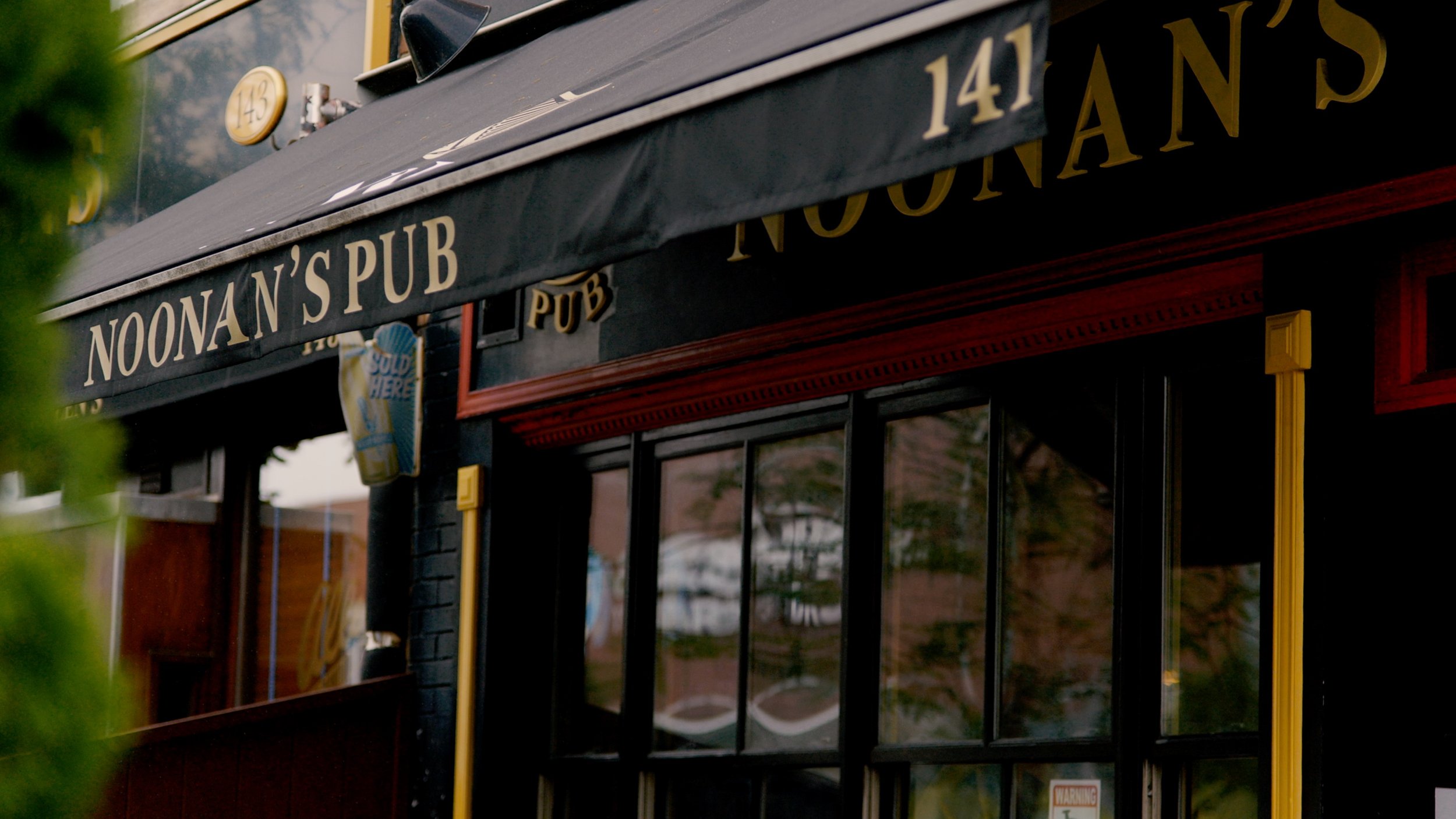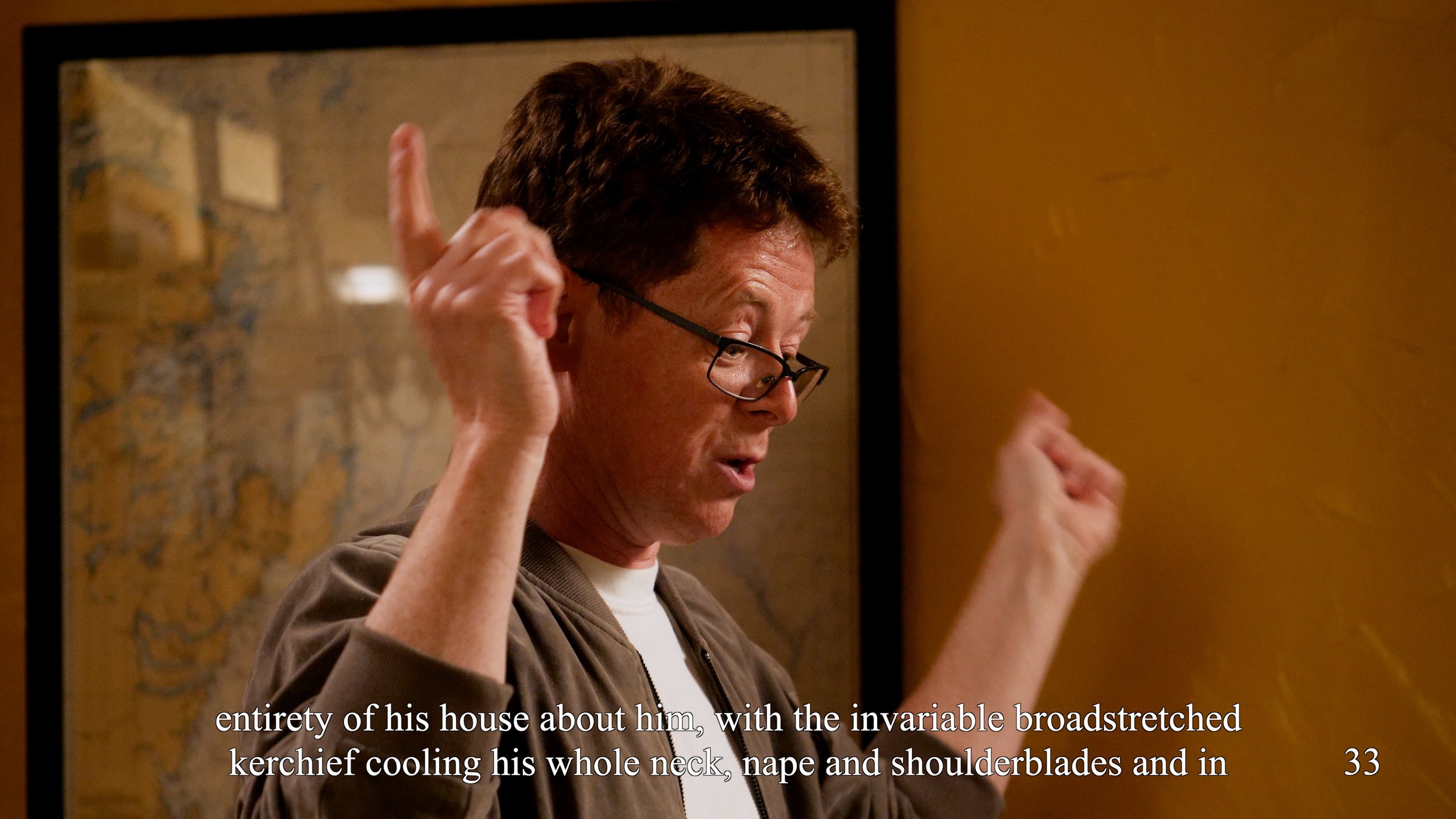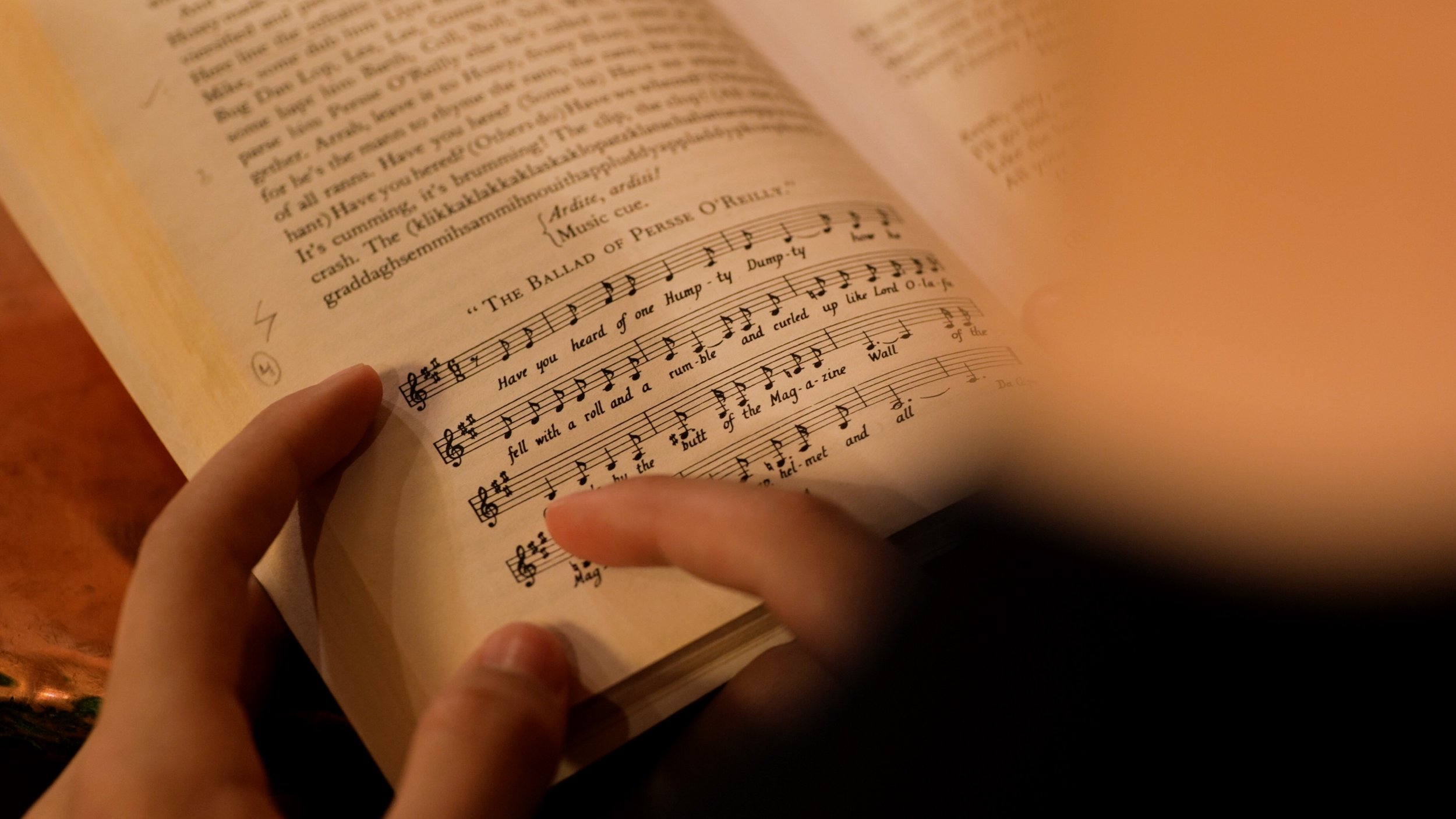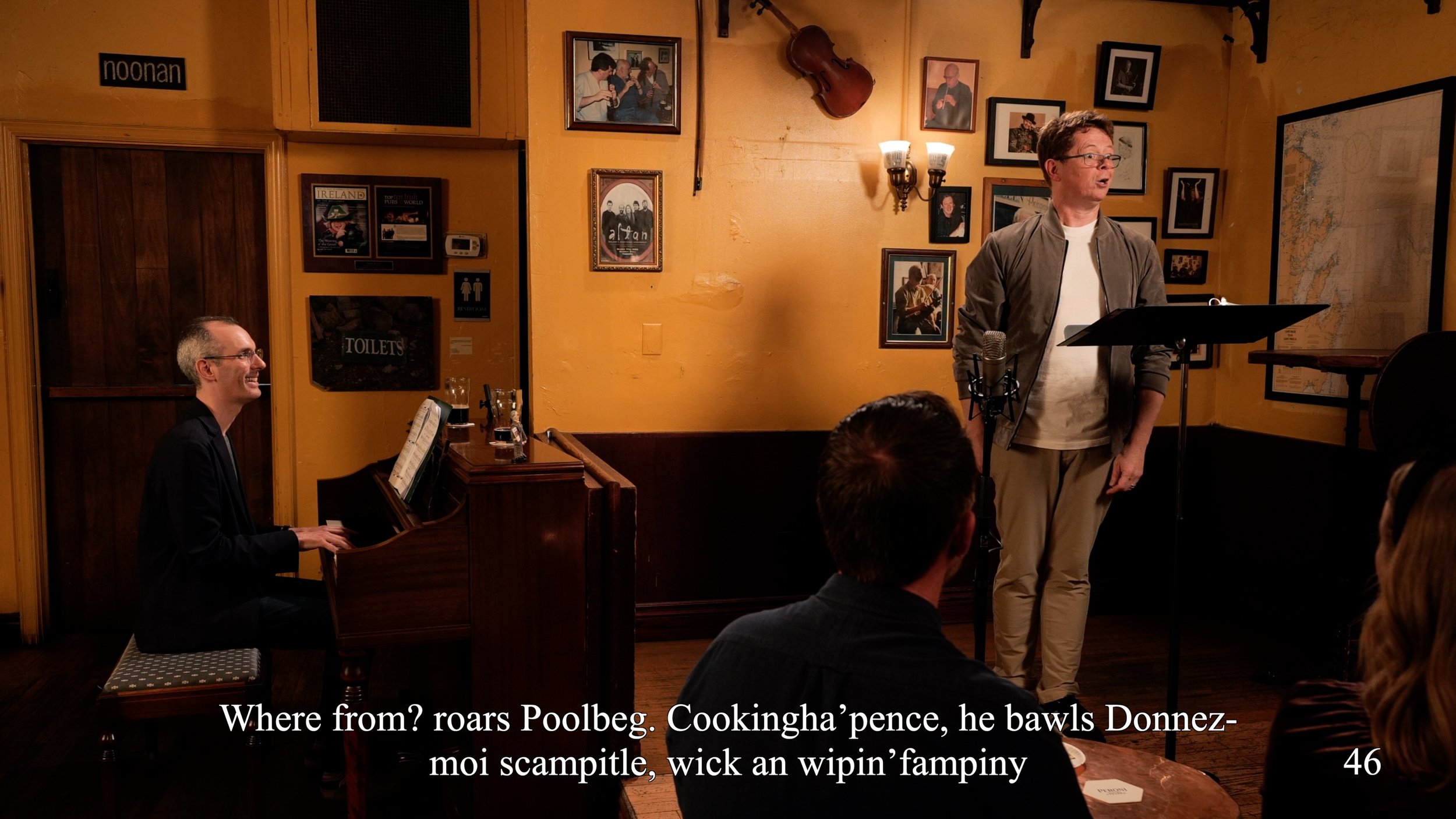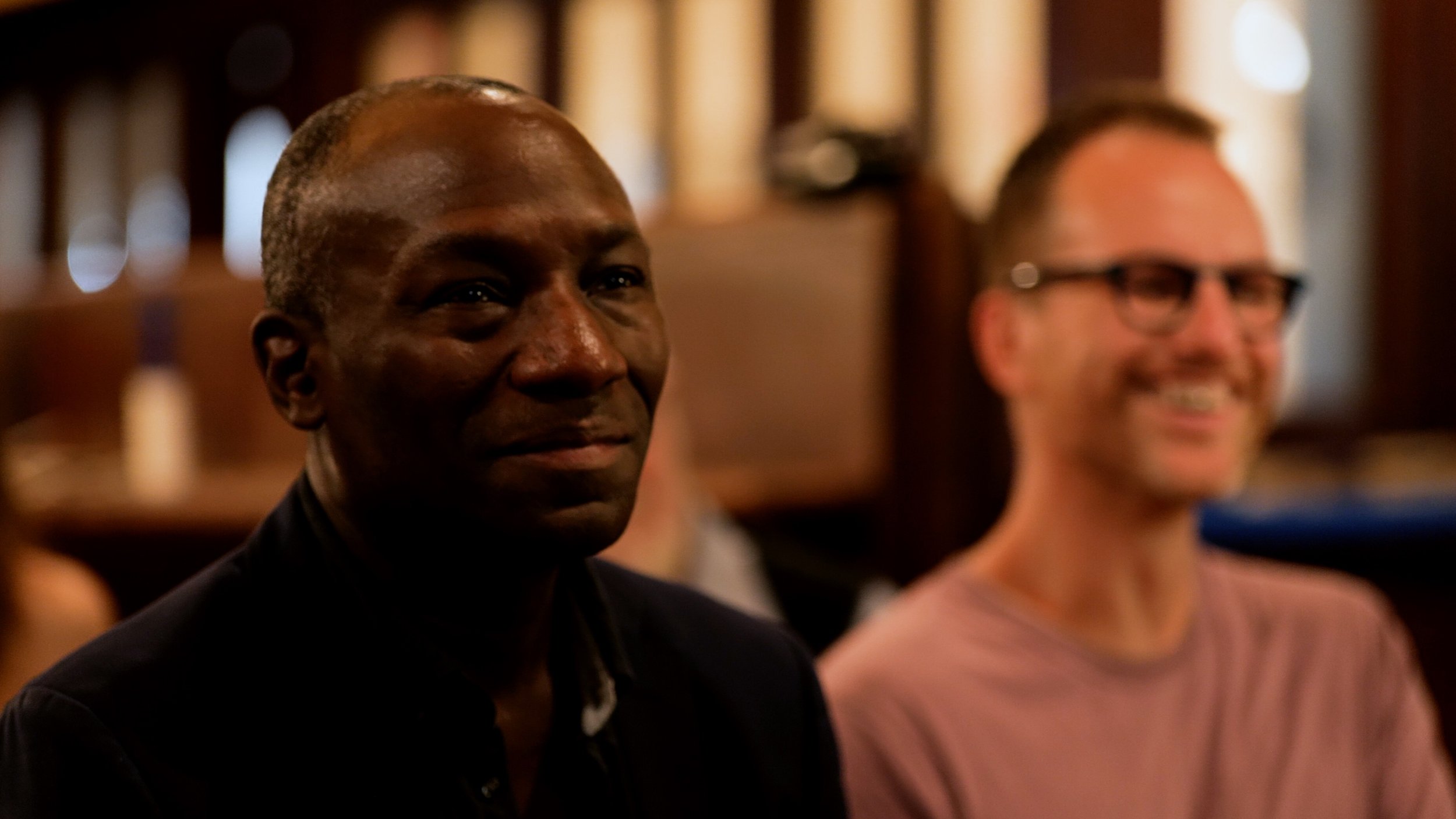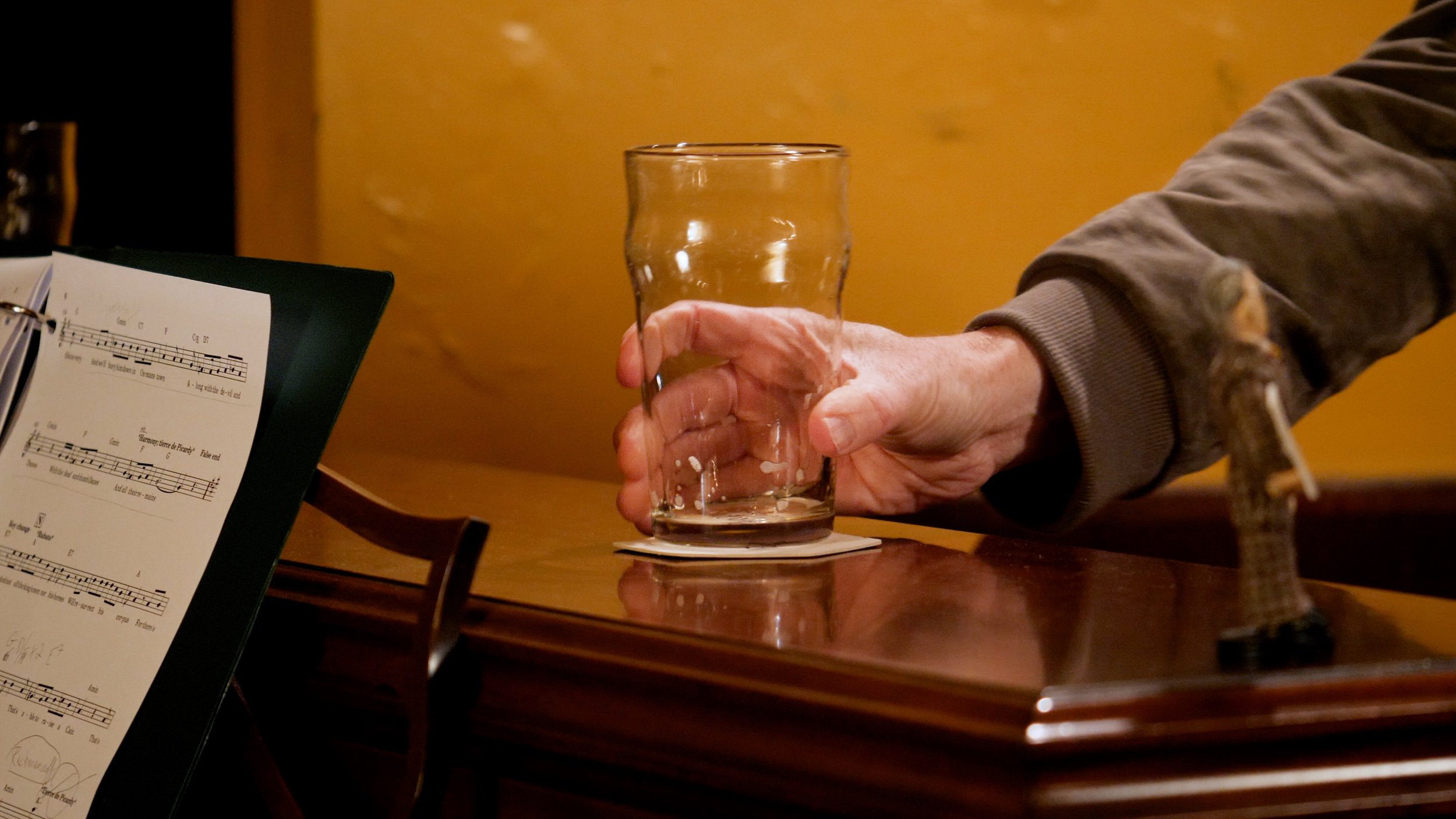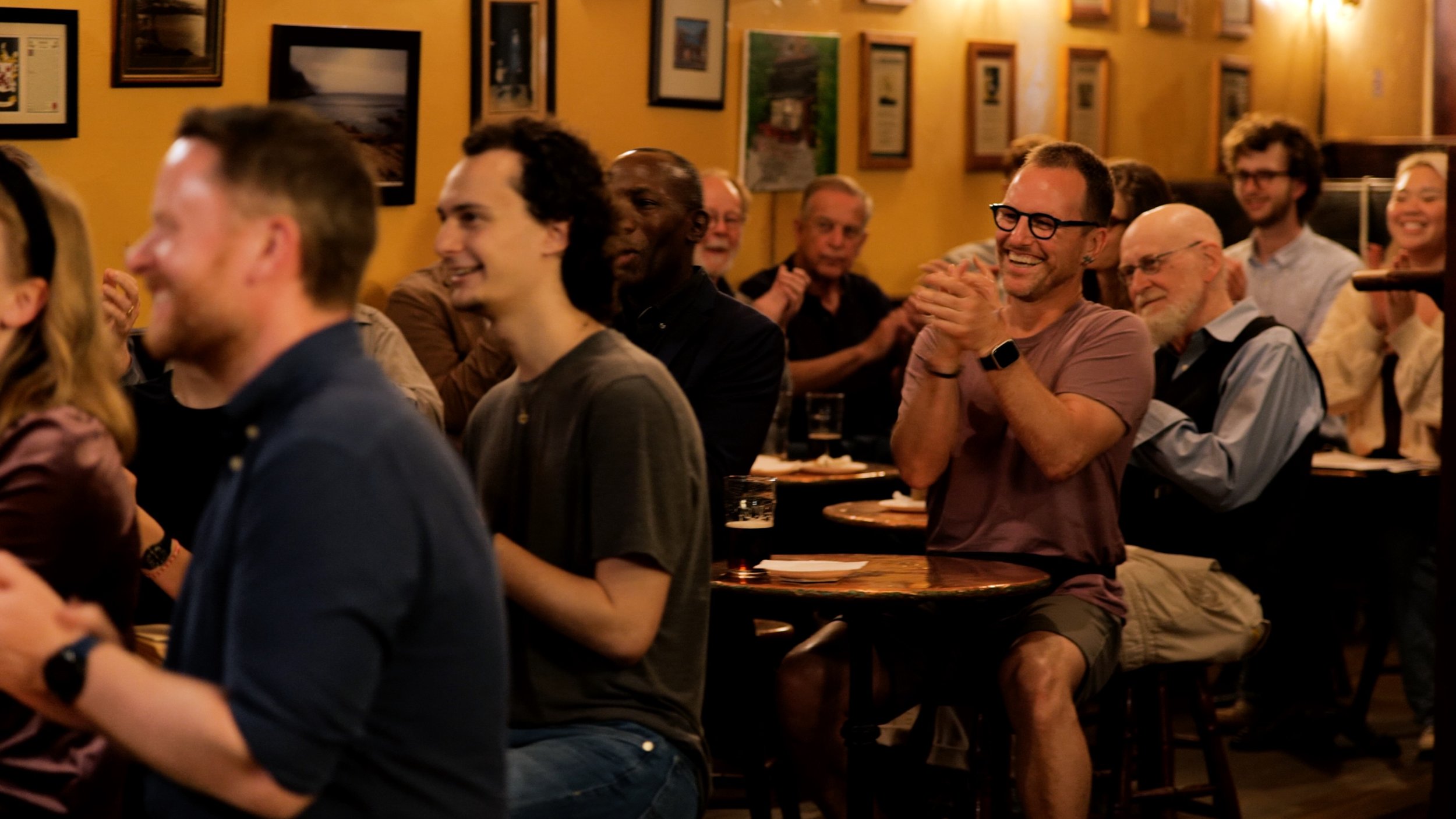James Joyce’S Finnegans Wake
FILM SERIES & PODCAST
Starring Irish-Canadian actorS
Richard Harte & PIP DWYER
Directed by Adam Seelig
“Harte has found a way to crack the private code and maintain the original voltage… of one of the most funny and challenging novels of the 20th century, James Joyce’s Finnegans Wake, in a first-of-its-kind filmed reading series.”
The Irish Voice
CHAPTER 1 FILM
TRAILER (1 miN.)
film (86 miN.)
written by James Joyce
read live in Toronto by Richard Harte
song performed by Kevin Kennedy
directed by Adam Seelig
includes complete text pages 3-29
running time 86 minutes
releasing spring 2023 (MEDIA RELEASE)
CHAPTER 2 FILM
TRAILER (1 miN.)
FILM (50 min.)
written by James Joyce
read by Richard Harte
directed by Adam Seelig
song performed by Harte & Seelig
filmed live at Noonan’s Irish Pub, Toronto | includes complete text pages 30-47
running time 50 minutes
releasing 2024
CHAPTER 3 FILM
TRAILER (1 MIN.)
FILM (81 MIN.)
written by James Joyce
read by Richard Harte
directed by Adam Seelig
music performed by Brandon Bak (drums) & Adam Seelig (piano)
filmed live in Toronto, Canada
includes complete text pages 48-74
running time 81 minutes
releasing 2025
CHAPTER 4 FILM
TRAILER (1 MIN.)
FILM (80 MIN.) — COMING SOON!
written by James Joyce
read by Richard Harte
directed by Adam Seelig
filmed live at Type Books on Queen Street West in Toronto, Canada, 22 January 2024
includes complete text pages 75-103
running time 80 minutes
Releasing 2026
PODCAST
Join us for Joyce's divine and delirious comedy as read by Irish-Canadian actor Richard Harte, with introductions by Artistic Director Adam Seelig. The podcast series, James Joyce’s Finnegans Wake, is free and available through: APPLE, SPOTIFY, AMAZON, YOUTUBE.
FW Episodes & Transcripts
PROJECT DESCRIPTION
From 2023-2029, One Little Goat will film all 17 chapters (30 Hours) of Joyce’s
Finnegans Wake before live audiences in various cities and locations
THE COMPANY will screen and release EACH CHAPTER, COMPLETING THE ENTIRE BOOK
in time for the 90th anniversary of ITS publication, May 4, 2029
”Toronto’s enterprising One Little Goat Theatre Company” (New York Times) continues its cinematic journey through James Joyce’s divine and delirious comedy, Finnegans Wake, as brought to life by the virtuosic performance of Irish-Canadian actor Richard Harte. Directed by Adam Seelig and shot with a live audience — with each chapter in a new location — this marks the first ‘audio-video book’ of Joyce’s extraordinary novel.
As of March 2024: Chapters 1 and 2 screened and will screen at film festivals in Dublin and Toronto; Chapters 3 and 4 are in post-production; Chapter 5 is in production.
“Joyce is good. He is a good writer. People like him because he is incomprehensible and anybody can understand him.”
Grudging though her admiration for Joyce may have been, Gertrude Stein was right: Finnegans Wake (1939) is that very incomprehensibility that anyone can understand because Joyce’s notoriously gnarly dream-novel is oddly, absurdly, obsessively funny. It is, in short, a comedy, a comedy that, in Joyce’s words, “is all so simple. If anyone doesn’t understand a passage, all [they] need do is read it aloud.”
Intended to be heard as much as read, Joyce’s 628-page novel is essentially impossible to read, and yet Dublin-born Richard Harte has a remarkable knack for it, partly attributable to his two decades as a leading member of Toronto’s Anna Livia Players, who perform Joyce’s Ulysses annually. In addition to Harte’s reading for an intimate, live audience in Toronto, the film of Chapter 1 includes montages echoing themes in the novel as well as Irish-Canadian singer Kevin Kennedy’s rendition of the “Finnegan’s Wake” folk song.
A valuable resource for current and future audiences of Joyce’s incomparable work, One Little Goat’s Finnegans Wake:
is filmed in front of a live audience, enhancing the novel’s comedy;
by virtue of being a video recording, allows audiences to see in addition to hear the reader’s tongue-twisting virtuosity;
includes subtitles and page numbers, enabling readers to ‘flip’ to their desired spot in the novel (page and line numbers are standardized in all editions of Finnegans Wake);
will be widely available following screening premieres.
Above all, One Little Goat’s Finnegans Wake is a serious pleasure.
DIRECTOR & ACTOR NOTES
ADAM SEELIG — DIRECTOR:
Richard Harte is one of the people on planet earth to recite Finnegans Wake. He more than reads it: he plays it, almost sings it. He speaks fluent Joyce, fluid Wake.
If you’re familiar with the Wake, you’re in for a wonderful interpretation. If you aren’t, Richard’s reading will open the door, as it did for me, to Joyce’s funny, tender, lyrical, bewildering novel.
I’ve enjoyed James Joyce as an adult much as I enjoyed Mother Goose as a child, for just as the playful rhythms of nursery rhymes delighted me well before I ever ‘understood’ them, so too have the dizzying patterns of Finnegans Wake enchanted me in all their in/comprehensibility. It’s no coincidence that Humpty Dumpty comes up — and down! — throughout Joyce’s novel, beginning with the very first page. Decades before the Wake, Joyce’s ‘Mother Goosey’ affinity was immediately apparent from the opening line of A Portrait of the Artist as a Young Man: “Once upon a time and a very good time it was there was a moocow coming down along the road and this moocow that was down along the road met a nicens little boy named baby tuckoo….”
As I’ve been going through the Wake, three comments have come most frequently to mind.
The first is from Joyce himself via Richard Ellmann’s biography. When a friend complained that Finnegans Wake is all nonsense, Joyce responded, “It is an attempt to subordinate words to the rhythm of water.” So important was this concept to Joyce that Ellmann adds: “He felt some misgivings about Finnegans Wake the night it was finished, and went down to the Seine to listen by one of the bridges to the waters. He came back content.”
The second is from Samuel Beckett, Joyce’s friend and admirer, for whom the Wake “is not to be read – or rather it is not only to be read. It is to be looked at and listened to. His writing is not about something; it is that something itself.”
And the third is from Robert Houle, whose spring 2022 retrospective at the Art Gallery of Ontario opened with this observation from the artist: “The lack of a linear chronology in myth, storytelling, and dreams, the interchangeable grammar and the interchangeability of perception is what makes wonderful, rhythmical patterns of thought in the oral traditions of the ancient ones.”
In this sense, I think of Joyce, for all his modernism, as an “ancient one.”
The myth, story, dream of humanity that Joyce has channeled through Finnegans Wake is a dream I didn’t know I’d had. And yet here it is to go with and flow with, to engage and decipher and enjoy.
My hope and feeling is that Richard’s filmed reading will become an invaluable resource for current and future readers of Finnegans Wake. No matter how many times I experience it, it invariably offers new discoveries, riches, beauties. —Toronto/Tkaronto, February 2023
Richard harte — actor:
The restless comic energy of Finnegans Wake reminds me most of the 1950s BBC radio comedy, The Goon Show, which I revisited when preparing for this reading. My uncles in Dublin (in “sweet Rush”!) used to play me those records as a kid growing up in the 1970s and 80s, with Peter Sellers and Spike Milligan jumping from character to character, accent to accent, sketch to sketch. Similarly, the moment-to-moment rush of the Wake is so alive with all its references and songs that even if we may never know where they all come from (though McHugh’s Annotations are a huge help in that regard), I think we can all ultimately “get it”: that the Wake is a stupendous, hilarious and intoxicating flow of real, unbridled, quicksilver, flashing, living thought. As Joseph Campbell puts it so eloquently in A Skeleton Key to Finnegans Wake, “Through notes that finally become tuneable to our ears, we hear James Joyce uttering his resilient, all-enjoying, all-animating ‘Yes,’ the Yes of things yet to come, a Yes from beyond every zone of disillusionment, such as few have had the heart to utter.” —Toronto/Tkaronto, February 2023
QUESTIONS?
How is this book (and video) different from other books (and videos)?
You need not read or watch our film of Finnegans Wake in chronological order, all at once. Feel free to jump around. Digest a little at a time. Are you wondering, for example, about a paragraph on page 18? Skip ahead in the video and give it a listen: page numbers are marked at bottom right of the screen, text is all subtitled at bottom.
Did you forget to put an apostrophe in the title of Finnegans Wake?
No, Joyce did, transforming “Wake” into a verb.
I’m new to Finnegans Wake. Any thoughts on where to start?
Some favourite moments from Chapter 1 include:
the first page — p.3, “riverrun, past Eve and Adam’s” (0:40)
the Museyroom — p.8, “This the way to the museyroom” (15:17)
Mutt & Jute — p.15, “In the name of Anem this carl” (37:21)
the prankquean — p.21, “It was of a night, late, lang time agone” (54:13)
“Finnegan’s Wake,” the 19th-century Irish-American folk song that inspired Joyce’s title and in which Joyce saw a comedic allegory for the cyclical rise and fall of humanity — “Tim Finnegan lived in Watlin’ Street” (1:21:03)
Have others read, recorded, filmed Finnegans Wake?
Yes, many of whom are listed with appreciation in our ending credits. One Little Goat’s production marks the first ‘audio-video book’ of the Wake.
I love Richard’s reading! Can anyone clarify a little more of it?
Rest assured, Finnegans Wake will forever defy total comprehension. Still, there are wonderful guides in public libraries and online to walk you through the novel, a number of which are listed in our ending credits (e.g. William Tindall’s Reader’s Guide, Danis Rose’s online paraphrases of each chapter known as the Chicken Guide). There are also Wake reading groups open to new members that meet in person and online around the world. Last but not least, enjoy One Little Goat’s Podcast Series, “James Joyce’s Finnegans Wake,” available on our website and through podcasting platforms.
¡¡ Go to our Podcast Series “James Joyce’s Finnegans Wake” !!
ABOUT THE ARTISTS
James Joyce (1882-1941) is arguably the most influential and revolutionary English-language writer of the 20th century. His books include Dubliners (1914), A Portrait of the Artist as a Young Man (1916), Ulysses (1922) and Finnegans Wake (1939). Born and raised in Dublin, Joyce, together with his spouse Nora Barnacle and their two children, lived in various cities, including Paris, Trieste and Zürich.
Richard Harte (b.1972). Born in Ireland’s capital and raised in both Dublin and Halifax, Nova Scotia, Richard Harte has made Toronto his home for the past 25 years. He has performed on stages across Canada, with credits that include: The Boys In The Photograph (Mirvish), Saltwater Moon (Sudbury Theatre Centre), A Midsummer Night’s Dream (Canadian Stage), Stones In His Pockets (Magnus Theatre) and Disco Pigs (MacKenZieRo, the Irish Repertory Theatre of Canada). Harte is a member of Toronto’s Anna Livia Company, performing James Joyce’s Ulysses every Bloomsday (June 16). TV credits include: Mayday, Lost Girl, Murdoch Mysteries, The Listener, Copper, Nikita, Being Erica, Port Hope. Finnegans Wake marks Harte’s seventh production with One Little Goat, with previous pleasures including: Antigone:Insurgency, Talking Masks (Oedipussy), Ubu Mayor, Music Music Life Death Music and PLAY: A (Mini) History of Theatre for Kids, which he performed for 36,000 students in 140 Toronto elementary schools before and during the pandemic.
Pip Dwyer was born in Edmonton, Alberta to her freshly immigrated Irish parents (a Dublin mom and a Tipperary dad). She spent her formative years in a small town in northern Alberta where her father practiced medicine. At age 15 her family moved to Ireland, where Pip attended high school and earned her BA from The Samuel Beckett School of Drama at Trinity College Dublin. Pip trained further in NYC, toured with The Caravan Stage Barge and landed in Toronto in 2002, which she has made her home since. Her theatre credits include Watching Glory Die (Love2Theatre), Jewel and A Beautiful View (Shotgun Juliet), Circle Mirror Transformation (Play Practice), Underneath and The Master And Margarita (Praxis Theatre) and film/TV credits include Sisters (RTE/Shaftesbury/Crave), Meet Me Next Christmas (Netflix), Our Mother's Secret Affair (Lifetime), Mr. Monk's Last Case (PeacockTV), Murdoch Mysteries (CBC), Suits (USA), Rising Suns (NOFS) and Orphan Black (BBC America).
Adam Seelig (b.1975) is a poet, playwright, director, and the founder of One Little Goat Theatre Company in Toronto, with which he has premiered works by Yehuda Amichai, Thomas Bernhard, Claude Gauvreau and others. His books include Every Day in the Morning (slow) (New Star Books, shortlisted for the ReLit Award in Poetry) and a number of plays and plays-with-music, including Talking Masks and Ubu Mayor (Book*hug). His work has been covered in the New York Times, Globe and Mail, Poetry Magazine, CBC Radio Canada and other media, and he is the recipient of a Canadian Commonwealth Scholarship, and of a Stanford University Golden Award, for his study of Samuel Beckett’s original manuscripts, published in Modern Drama. Born and raised in Vancouver, Seelig has also lived in northern California, New York, England and Israel.
Join us for launches and screenings
Join our mailing list for invitations to premiere screenings and events.
